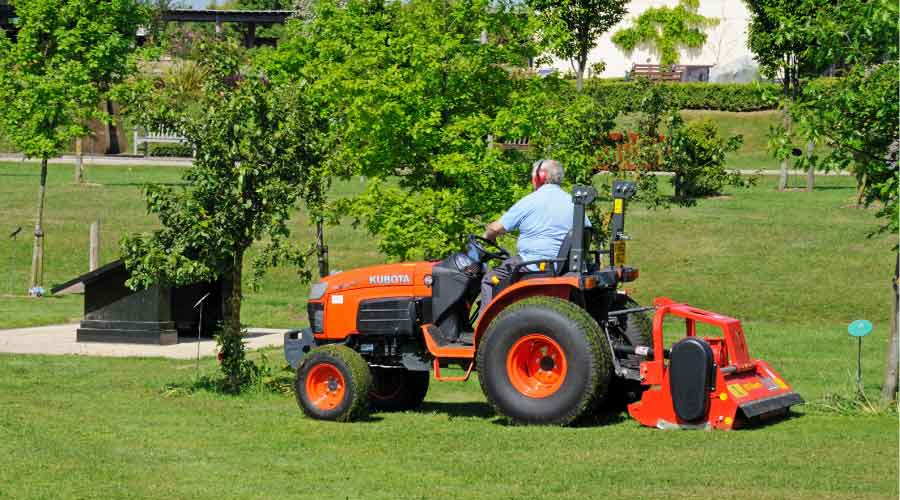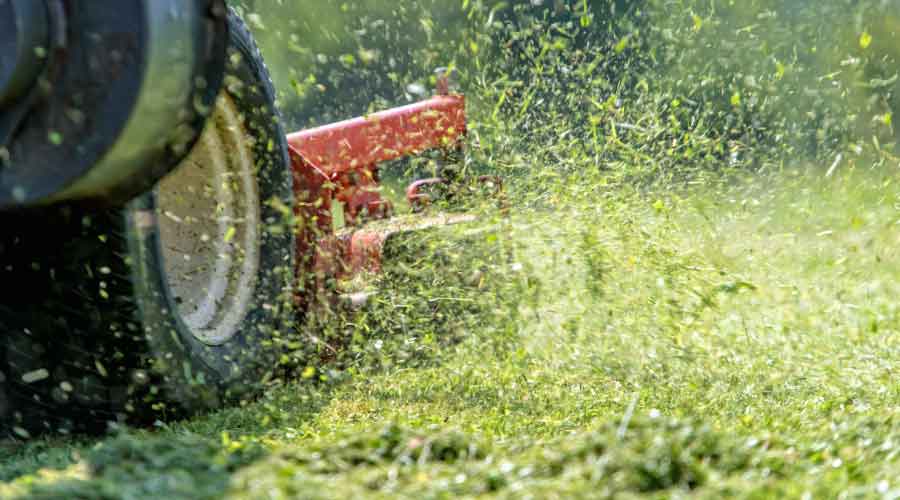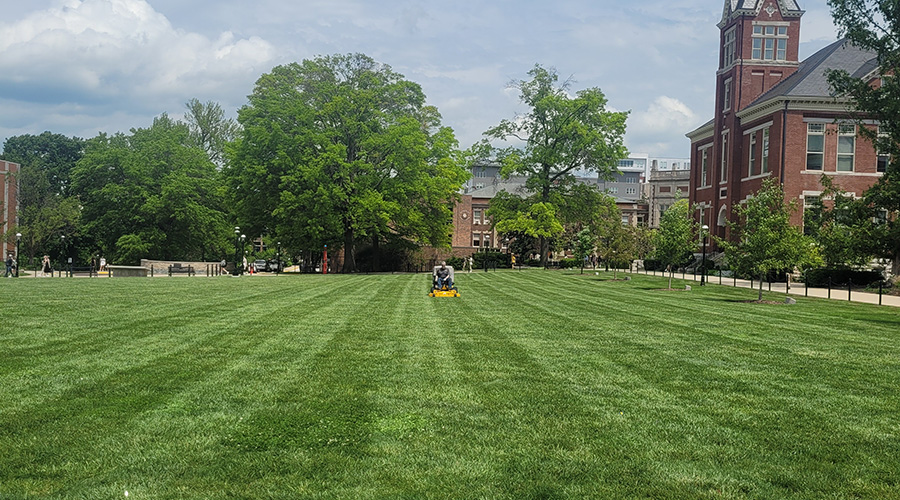Technology is the Future of Mower Design
The advances and requirements can make the task of specification challenging for managers.
When manufacturers speak with grounds managers, they find "the rising cost of fuel as a concern,” says Brad Unruh, director of new product development with Hustler Turf. “But many have realized changes like fuel-injected-engine options can be of some help. In tackling fuel costs, the topic of battery power often comes up. While a more accepted option, it is not a true one-to-one swap for a gas unit. They can’t get the same amount done in the same period without having to recharge the unit.”
Electric mowers are on the horizon as far as technology improvements for next-gen commercial mowers, Unruh says, with the primary concerns remaining cost and performance.
“What will the financial impact of the initial switch to electric look like for my fleet?” he says. “And with that adjustment, what does my productivity level look like with battery and electric?”
Operators will need to factor in recharge time and battery capabilities in order to operate as efficiently as possible, Unruh says. The technology in electric mowers “is only going to get better over time. Continued infrastructure adjustments and charging advancements, as well as added pressure from properties requiring the shift to electric, will only build more anticipation for the future of electric mowing.”
Autonomous mowers might be a potential consideration for fleet managers, especially with the Great Resignation, Unruh says.
“It’s important to understand that the autonomous solutions come with a higher price tag, and there isn’t an ability for the mowing to be 100 percent accurate,” he says.
Autonomous units can help managers operate with smaller staffs, but they still need mower operators to handle tasks like edging and blowing grass off parking lots and sidewalks.
While technological advances like upgraded batteries and autonomous mowers are popular topics, Unruh says the most impactful changes are related to battery use and management.
“I anticipate seeing customizations like swappable batteries or even battery-exchange programs in the future,” Unruh says.
While the new technologies “are all exciting, and there is a big push to have changes incorporated as soon as possible,” Unruh says, managers also must understand that these innovations will take time to achieve full efficiency.
No matter what kind of technologies are introduced, it is important to recognize “the worth of a consistent employee,” Unruh says.
To address the labor shortage, grounds managers should identify products that will best support their needs, says Dan Riddle, marketing manager with Doosan Bobcat.
“One way to evaluate your needs is to ask yourself which commercial mower will allow me to clean my equipment quickly, make standard maintenance updates as fast as I can, and overall, be the most efficient product for my business,” Riddle says.
Disruptive technology
Progress in the commercial lawn mower space has typically been defined by incremental changes and improvements, and “lawn mower design and manufacturing are quickly being disrupted by two emerging trends — electric and autonomous technologies,” says Aaron Griffith, nation sales manager with Cub Cadet.
While gasoline-powered mowers continue to dominate the commercial space, market and regulatory forces — notably, California’s recent enactment of AB 1346 regulating gasoline-powered tools — “are driving manufacturers to concept and develop electric-powered machines to respond to growing landscaper demand,” Griffith says.
The advances and requirements can make the task of specification challenging for managers.
“It can be difficult to discern what’s worth the investment, both in time and money, when it comes to autonomous and robotic mowers,” Griffith says, adding that requirements for commercial electric mowers are rigorous compared to residential mowers, pushing electric technology to its limits.
“They must be designed to stand up to the rigors of commercial use and ultimately provide a net positive ROI to the landscaper’s business,” he says.
Autonomous technologies are also shaping the future of mower design. With managers grappling with widespread labor shortages and increased overhead, the business case for autonomous mowers continues to look more appealing.
As with any emerging technology, autonomous and robotic mowers, “have the potential to disrupt and reinvent the way landscaping businesses are run,” Griffith says. “While the future will inevitably be a little more hands-free, dealers and landscapers must evaluate which autonomous products can drive value now and which are simply shiny concepts behind glass displays.”
While good product design begins with an idea, “great product design begins with the customer," Griffith says. “At the end of the day, the merit of any product, feature or service is defined by the problems it solves for the individuals it serves.”
As a result, developers and manufacturers must prioritize a customer-first approach to mower manufacturing, and managers should seek mowers that match their specific needs.
As labor shortages continue to be top of mind, Griffith says managers “are looking for solutions and equipment that can help increase the efficiency and productivity of their operations.”
Howard Riell is a freelance writer in Henderson, Nevada.
Related Topics:













